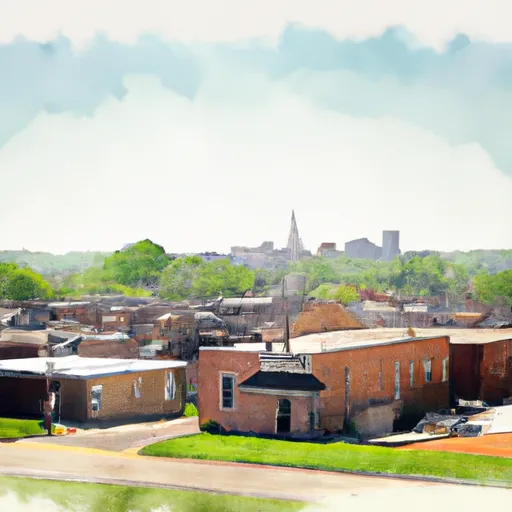-
 Snoflo Premium
Snoflo Premium
Get unlimited access to all our content
With no Ad interruptions! - Start Your Free Trial Login with existing account
Walker
Eden Index
Climate
8.3
•
Recreation
3.1
•
Community
0.5
•
Safeguard
4.5/10

Located in Vernon County, Missouri, Walker is a small town with a population of approximately 275 residents. The climate in Walker is classified as humid subtropical, characterized by hot, humid summers and mild winters. Summers often see temperatures ranging from 80-95°F, while winters average around 20-40°F. The town experiences moderate rainfall throughout the year.
Walker is surrounded by a diverse hydrology, including rivers, creeks, and lakes. The Osage River flows nearby, offering opportunities for fishing, boating, and water sports. In addition, Sac River and Marmaton River are nearby water bodies that provide further recreational options. These waterways are home to a variety of fish species, including bass, catfish, and crappie, making it a popular destination for anglers.
Outdoor enthusiasts can explore the picturesque landscapes surrounding Walker. The region offers ample opportunities for hiking, camping, and wildlife observation. Stockton Lake and Truman Lake, within a short distance, provide additional recreational activities like swimming and picnicking.
Overall, Walker, Missouri, offers a pleasant climate, diverse hydrology, and numerous outdoor recreation opportunities, making it an appealing destination for nature lovers and outdoor enthusiasts.
What is the Eden Index?
The Snoflo Eden Index serves as a comprehensive rating system for regions, evaluating their desirability through a holistic assessment of climate health, outdoor recreation opportunities, and natural disaster risk, acknowledging the profound impact of these factors on livability and well-being.
Climate Health Indicator (CHI): 8.3
Walker receives approximately
1127mm of rain per year,
with humidity levels near 82%
and air temperatures averaging around
14°C.
Walker has a plant hardyness factor of
6, meaning
plants and agriculture in this region thrive during a short period during spring and early summer. Most
plants will die off during the colder winter months.
By considering the ideal temperature range, reliable water supplies, clean air, and stable seasonal rain or snowpacks, the Climate Health Indicator (CHI) underscores the significance of a healthy climate as the foundation for quality living.
A healthy climate is paramount for ensuring a high quality of life and livability in a region, fostering both physical well-being and environmental harmony. This can be characterized by ideal temperatures, reliable access to water supplies, clean air, and consistent seasonal rain or snowpacks.
Weather Forecast
Streamflow Conditions
Osage
Area Rivers
Osage
Snowpack Depths
Osage
Reservoir Storage Capacity
Osage
Groundwater Levels
Recreational Opportunity Index (ROI): 3.1
The Recreational Opportunity Index (ROI) recognizes the value of outdoor recreational options, such as parks, hiking trails, camping sites, and fishing spots, while acknowledging that climate plays a pivotal role in ensuring the comfort and consistency of these experiences.
Access to outdoor recreational opportunities, encompassing activities such as parks, hiking, camping, and fishing, is crucial for overall well-being, and the climate plays a pivotal role in enabling and enhancing these experiences, ensuring that individuals can engage in nature-based activities comfortably and consistently.
Camping Areas
| Campground | Campsites | Reservations | Toilets | Showers | Elevation |
|---|---|---|---|---|---|
| Fort Chaffee RV Military | None | 448 ft | |||
| Lee Creek Public Use Area | None | 401 ft | |||
| Blue Springs County Campground | 82 | 867 ft | |||
| Lake Wedington Rec. Area | 152 | 1,131 ft | |||
| Devils Den State Park | None | 1,035 ft | |||
| River Ridge - Ozark Lake | 18 | 391 ft | |||
| Charleston Lake | 4 | 487 ft | |||
| Lake Ft. Smith State Park | None | 745 ft | |||
| Prairie Creek - Beaver Lake | 112 | 1,135 ft | |||
| Vine Prairie | None | 402 ft |
Nearby Ski Areas
Catastrophe Safeguard Index (CSI):
The Catastrophe Safeguard Index (CSI) recognizes that natural disaster risk, encompassing floods, fires, hurricanes, and tornadoes, can drastically affect safety and the overall appeal of an area.
The level of natural disaster risk in a region significantly affects safety and the overall livability, with climate change amplifying these risks by potentially increasing the frequency and intensity of events like floods, fires, hurricanes, and tornadoes, thereby posing substantial challenges to community resilience and well-being.
Community Resilience Indicator (CRI): 0.5
The Community Resilience Indicator (CRI) recognizes that education, healthcare, and socioeconomics are crucial to the well-being of a region. The CRI acknowledges the profound impact of these elements on residents' overall quality of life. By evaluating educational resources, healthcare accessibility, and economic inclusivity, the index captures the essential aspects that contribute to a thriving community, fostering resident satisfaction, equity, and social cohesion.

